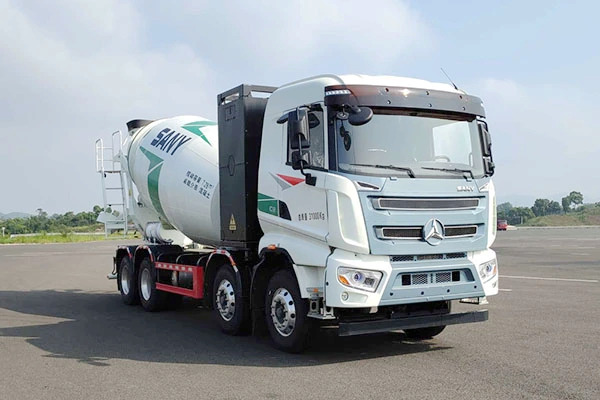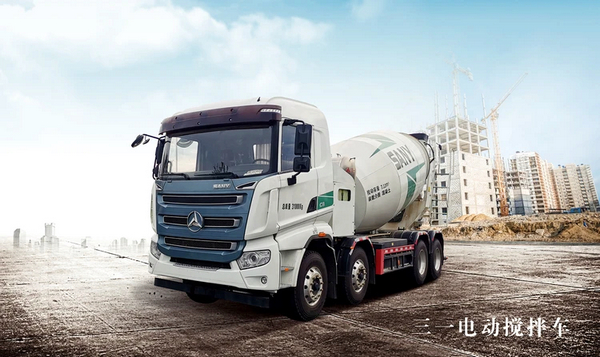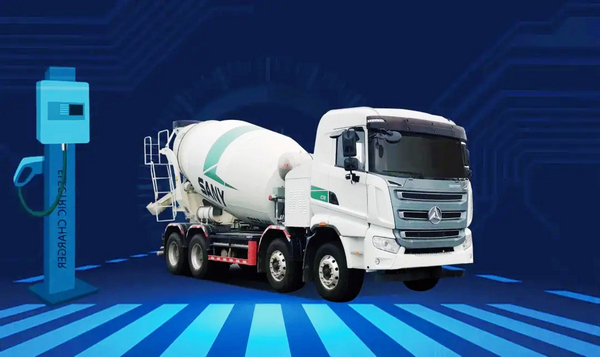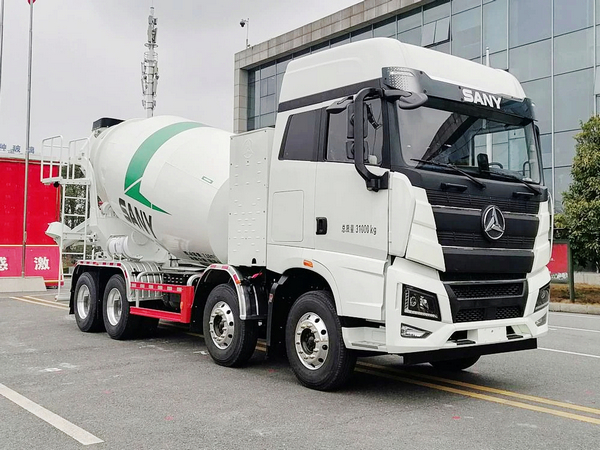As winter fully sets in across the country, especially in the northern regions where nighttime temperatures have already dipped below freezing, ensuring the longevity and reliable operation of electric mixer trucks in such cold environments requires meticulous care and maintenance.
Here we present the winter operation guide for Sany electric mixer trucks, covering key areas such as power batteries, system components, and vehicle usage. It's a valuable resource filled with practical insights, highly recommended for reference and frequent review.

Power Batteries: Charge Smartly, Keep Warm
The power system of pure electric mixer trucks mainly relies on lithium-ion batteries. Due to their chemical properties, their performance in low temperatures is weaker than at normal temperatures, specifically being less suited for high current charging and discharging. Thus, some changes occur when operating the vehicle in cold conditions:
Firstly, the power battery (main battery) discharges less efficiently, weakening the overall vehicle power. If the ambient temperature exceeds the storage range, the vehicle (or equipment) must adopt appropriate storage measures, or the battery may suffer irreversible damage or even pose safety risks. If the vehicle is left unused in a low-temperature environment, it is recommended to park it in a warmer environment or ideally store it indoors as soon as possible.
Secondly, before driving in cold conditions, it is advisable to charge the battery or wait for the system to heat up, raising the battery's minimum temperature to 5°C to enhance energy recovery efficiency. When the vehicle's state of charge (SOC) falls below 30%, charge it promptly, and use the heating system wisely to extend the driving range.
Additionally, in cold weather, high current charging can harm the power battery system and shorten its lifespan. To protect the battery, the charging power will automatically adjust according to the battery's temperature, resulting in a charging time increase of about 0.5 to 1 hour.

System Components: Timely Inspections to Prevent Frost Damage
1. Windshield washer fluid and antifreeze should be replaced every 2 years or 60,000 kilometers. The selected antifreeze should have a freezing point at least 10°C lower than the local temperature.
2. In low temperatures, the capacity of the 24V low-voltage battery (auxiliary battery) decreases. Ensure the positive and negative terminals are clean and free from snow, ice, or frost to maintain reliable vehicle start-up. If the vehicle will be parked for over a month, disconnect the negative terminal of the low-voltage battery to prevent battery drain, which could leave the vehicle powerless. For long-term storage in cold conditions, it is advisable to remove the battery and store it in a room with suitable temperatures








